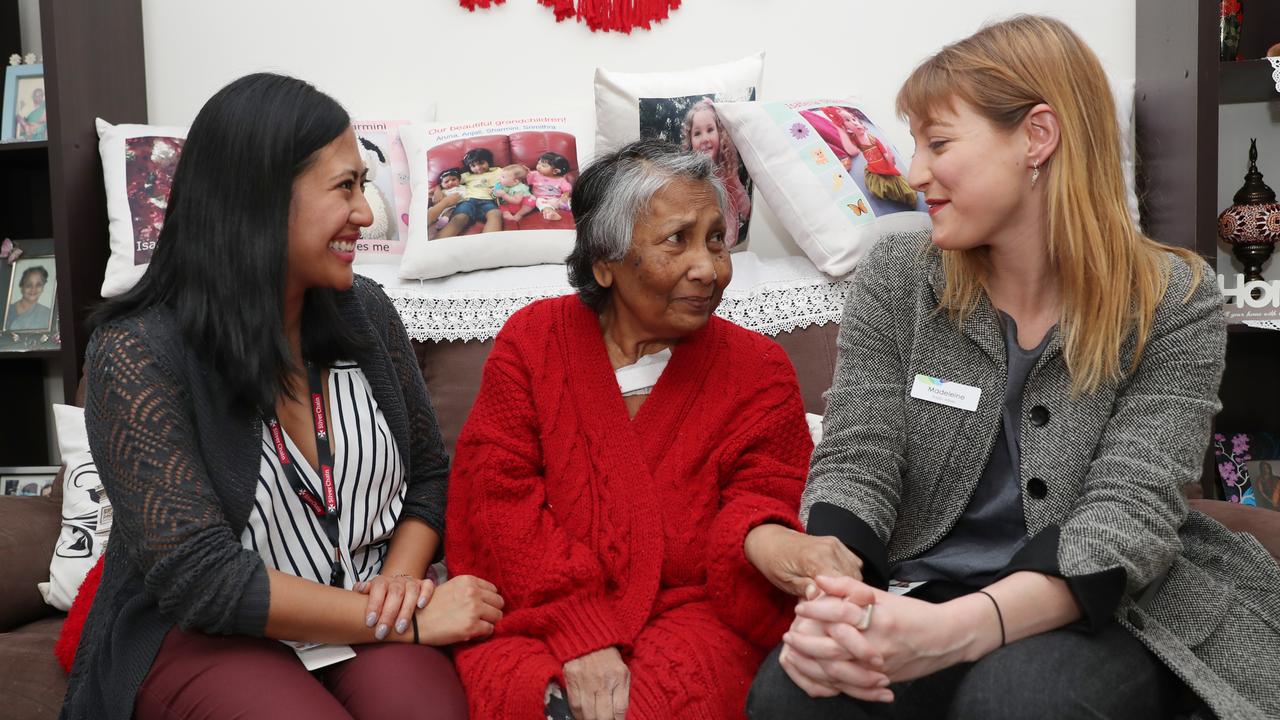Home care for Victorian patients frees up hospital beds for those most in need
In just two years, a groundbreaking program has managed to free up 9500 Victorian hospital beds, with money directed to supporting patients in their own homes and saving $14 million on their treatment.
Future Victoria
Don't miss out on the headlines from Future Victoria. Followed categories will be added to My News.
A revolutionary program treating some of Victoria’s sickest patients in their homes could be a key to easing pressure on the state’s hospital system.
In just two years, Western Health has managed to free up 9500 inpatient bed days — the equivalent of adding almost 14 beds in the hospital every day — by surrounding chronically ill patients with services to stop them becoming so sick that they need to be admitted.
By spending money to proactively support patients in their own homes the Health Department-backed Western HealthLinks pilot project has saved $14 million on their treatment, which has been redirected to beds for those who are most in need.
With the sickest 5 per cent of the population requiring up to 80 per cent of the health budget, Western Health director of chronic and complex care Jason Plant said such projects offered a blueprint for the future of healthcare.
“We are looking at strategies to increase capacity and the ability to care for patients outside of the traditional inpatient beds, which is what this program does,” Mr Plant said.
“Ideally we prevent patients getting to the point where they develop chronic disease.
This program is when they have been identified as having chronic disease and complex issues, using the hospital system a lot.”

An algorithm developed with the CSIRO screens hospital records data to identify patients with chronic and complex conditions, who are considered at higher risk of poorer outcomes and readmission to hospital.
Suitable patients are then offered the chance to take part in the program, which sees the Silver Chain Group provide in-home visits, 24/7 phone support, links with GPs and pharmacy support aimed at preventing a deterioration in their conditions.
An average public hospital bed costs more than $1600 a day and only caters for a single patient.
The same money can support dozens of patients if spent earlier, before their conditions become acute.
In the past two years, the Western HealthLinks program has supported 8000 patients, freeing up an average 13.8 hospital beds a day.
Similar measures are being examined at Barwon, Monash and Alfred Health to ease pressure on hospital budgets and improve the health of communities.

Where she once visited Sunshine Hospital dozens of times a year with acute anxiety and complex health issues, Lalita Close, 73, now has regular visits from a nurse at home and a “navigator” to guide information between her GP and the hospital.
With her GP able to treat issues before they become more major concerns, Mrs Close has only had to visit hospital once for kidney issues since joining Western HealthLinks in February 2018.
“This is wonderful, and it stops me going to hospital,’’ Mrs Close said.
HI-TECH HELP FOR AILMENTS
Health services need to be dramatically improved across the state as the biggest priority to create happy and healthy communities.
But the future of healthcare may be less about large new hospitals and more about services offered via personal devices, smartphones or consultations in a person’s own home.
New PwC Australia research has found Victorians consider the building of new health infrastructure more important than investing in any other sector, and the fourth most important factor in their enjoyment of where they live.
MORE FUTURE VICTORIA NEWS:
ROOFTOP GARDEN PLAN FOR MELBOURNE STADIUMS
THE MIDDLE-RING SUBURBS THAT MILLENNIALS ARE LOVING
THE EASY FOOD FIX THAT COULD CURE HEALTH CRISIS
But with the survey of more than 4600 Victorians revealing only 49 per cent are satisfied with the current state of health services available in their area and, with growth corridors in remote areas under the greatest strain, the existing hospital-based care model is not expected to cope with surging demand.
“We do have an ageing population, we do have more chronic disease and, through the wonder of medical advances, people can live with ailments that might need support for a lot longer,” PwC health partner Damien Angus said. “We need to look into different models of care and ways of caring for people.”
He said a move toward digitally supported services would free up the acute system to better focus on those in most need.

